After the beautiful and warm weather of the previous day's exploration of Plitvice Lakes, we woke up to a plummet in temperature and pouring rain, mixed with flakes of snow. I was glad that we had explored the lakes the day before. The plan for the day was to journey from Plitvice Lakes (Croatia) to Sarajevo (Bosnia and Herzegovina) and to stop at a few Bosnian villages along the way. (This, of course, would be in the proper style of a road trip with the ability to stop off at places along the way that were not in the guide book. In fact, Bosnia does not seem to be explored much in any guide book that I could find.)
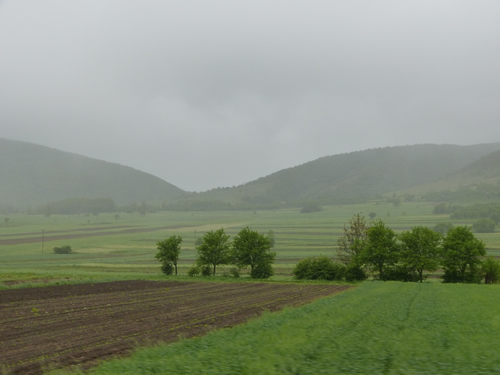
Misty and foggy hills near Bihać in Bosnia and Herzegovina.
Bihać is the first majorly-populated town soon after passing the Croatian border into Bosina. The area is known for white water rafting, and the landscape around does look pretty with green hills. The area around the river contained some nice-looking shops and restaurants. Due to the rain, we did not fancy getting out of the car and getting wet to take a look around. I think that most people in Bosnia and Herzegovina were indoors keeping dry because the roads and town seemed quiet.
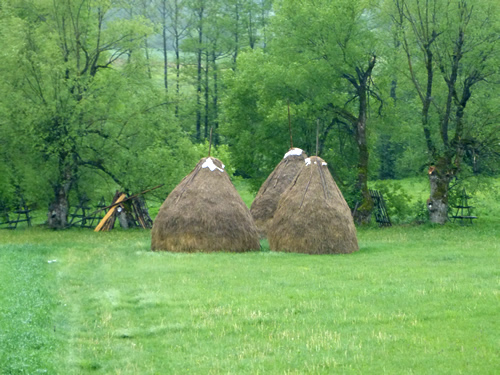
I saw many stacks of hay like this in the countryside in Bosnia and Herzegovina.
The first place we stopped at, after driving a little over an hour further, is a town called Jajce (a UNESCO heritage site). Apparently, the name of the town translates to the English word, "egg", due to the shape of the outcrop of the hill. The rain was still pouring down (it would remain so all day), but we managed to have a quick look around the quiet town. The town seemed to have many games/gambling areas, but there are historic places for visitors. A walled fortress is perched on the top of the hill, but due to the pouring rain, I could not convince the bloke to walk up it; (yes, I am mad and would have walked it in the rain). The town was quiet with many places shut, including shops and museums and catacombs, which I had wanted to visit. We were able to see the waterfall and read some of the tourist information signs (in English) around the town, and we saw a few buildings that had suffered damage in the war and were consequently abandoned. We also had a meal in the town at a pizzeria that was popular with the locals. The rain was disappointing as this looked like a nice town to explore.
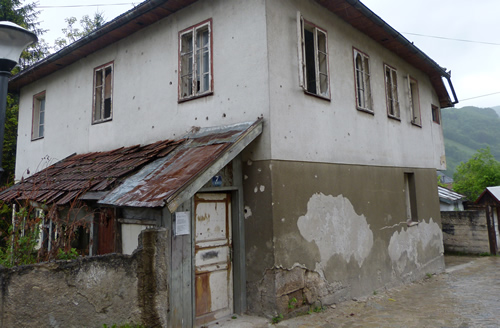
A building is riddled with bullet holes in Jajce.
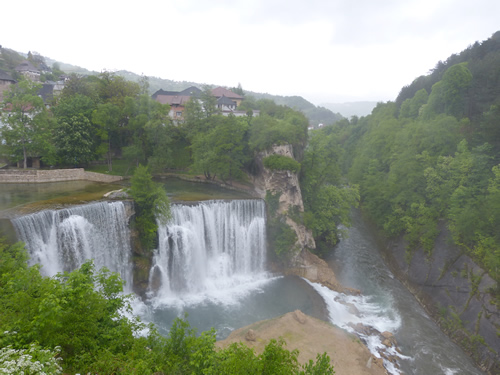
Jajce waterfall looks impressive.
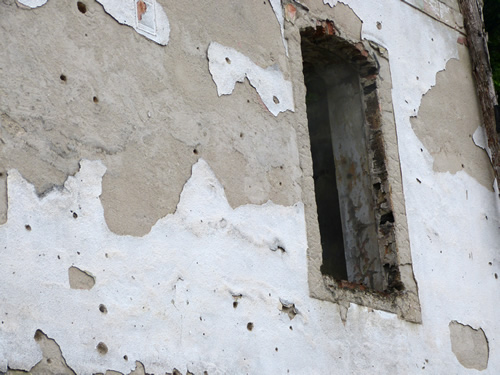
A close-up of one of the war-damaged buildings in Jajce.
The next town we stopped at on the road trip was Travnik. We stopped at the bottom of a hill where there was a brook and pedestrian area with covered restaurants and an outdoor seating area. However, the weather managed to keep people away, but I could see that this would be a normally busy outdoor area for locals and visitors. On a day like today, the rain kept everyone away. Despite the rain, we managed to walk through the old part of Travnik, up the hill, to visit the castle at the top and admire the views around us.
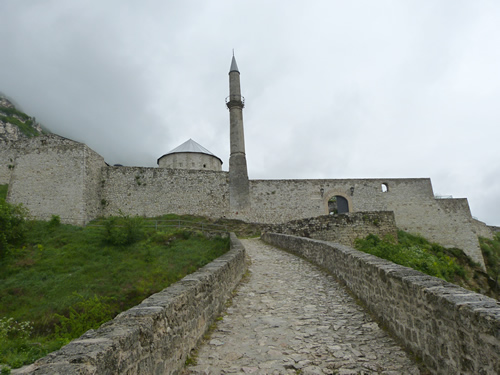
The cobbled stone road leads up to Travnik castle.
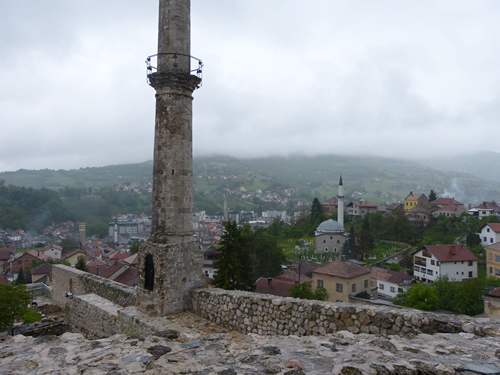
The view over Travnik town from Travnik castle.
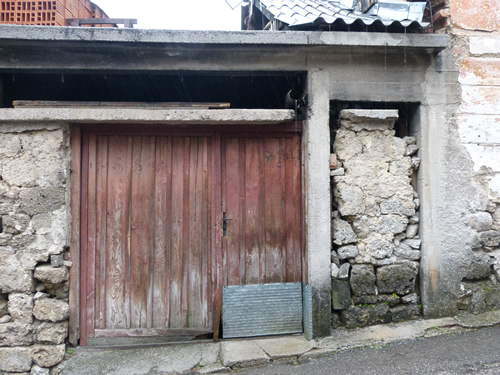
This building in Travnik had much character. I like the brick-red door, tin patchwork, and doorway sealed with cement and blocks.
On the way from Jajce to Sarajevo, I noted several watermill restaurants dotted around some of the riverbanks. Had the weather been nicer, it would have been great to randomly stop at one of these. (Unfortunately, we did not even stop for photographs. The weather had literally dampened my spirits.) The riverbank restaurants contained wheels, which I assume are used to spitroast meat.
Along the way, I also discovered many little wooden buildings around the low river areas and small wooden buildings used for keeping bees. The landscape of this part contains many hills and small mountains, and it is very green. The villages are constructed of wooden houses, and some of these are brightly-coloured. Nearly all of the villages have at least one mosque, and some of them also have a church. The country is culturally diverse. I liked the blend of east-meets-west. Many of these mosques and churches look very attractive and complete the skyline for any Bosnian village or town.
From Travnik, we journeyed toward Sarajevo. Another area we drove past on the way to Sarajevo was the "Bosnian pyramids". I believe that these pyramids are man-made, and they have built them to try to draw in the tourists, so we did not stop to look at these. Despite not having a detailed map of Sarajevo, we managed to find the small hotel straight away. (I knew its approximate location.) Our hotel was central, and after a quick freshen up, we went to explore the city.
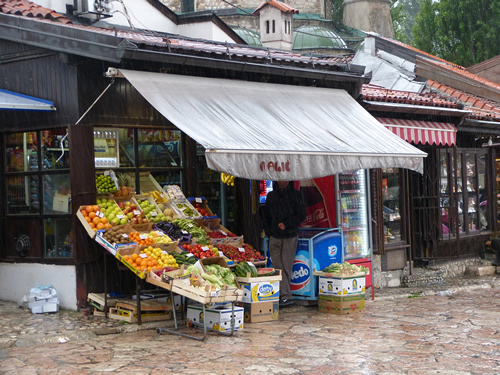
A fruit-seller in Sarajevo.
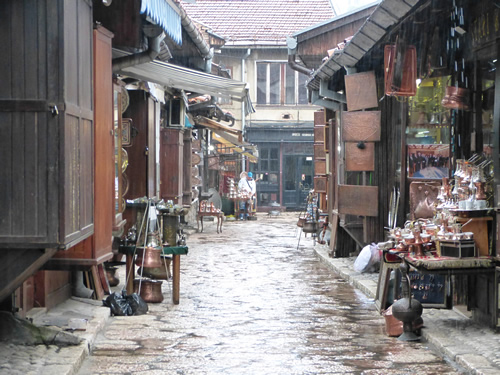
Coppersmith Street, Sarajevo, contains shops selling metal goods. This reminds me of a souk in Egypt or Morocco.
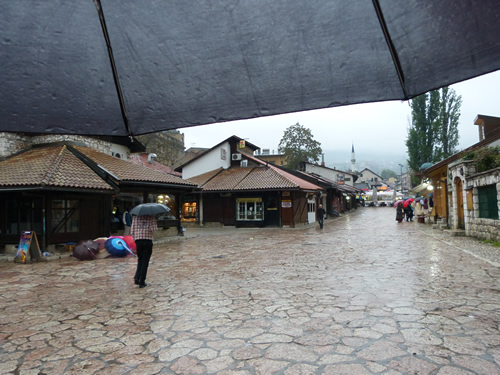
The centre of Sarajevo, standing under our umbrella and not far from its fountain (Sebilj).
After a quick exploration of Sarajevo, we had a quick bite to eat in the bakery near Coppersmith Street and had an early night and hoped for better weather the following day. Little did we know that we would be receiving a freak snowstorm in the middle of May in Sarajevo.
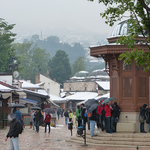
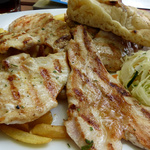
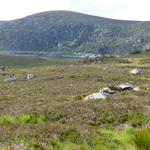
Leave a comment